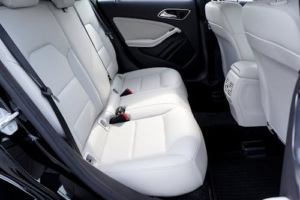Maintaining the exterior of your car in immaculate condition is essential to safeguarding it from long-term damage and preserving its value. It’s not just about appearances. Over time, the paint on your car may deteriorate due to the harsh environmental factors it is subjected to, such as UV radiation, rain, dust, bird droppings, and road salt. While frequent washing is beneficial, it is insufficient on its own.
Waxing is useful in this situation. However, how do you wax a car? It can be stressful to have so many items and methods accessible, especially if car maintenance is new to you. This comprehensive article will cover everything you need to know about auto waxing, from selecting the best wax to applying it expertly, regardless of your level of experience or desire to enhance your detailing regimen. Let’s begin your path to a more protected, shinier, and smoother ride.
What is car wax?
Car wax is a specially made product that is intended to protect and improve the paint job of your car. On top of the clear coat, it serves as a protective layer that protects the paint from damaging substances, including UV rays, dirt, bird droppings, tree sap, road filth, salt, and rain. Over time, wax helps maintain the color, clarity, and smoothness of the paint of your car by forming a barrier between the surface and the elements.
Car wax’s hydrophobic (water-repellent) qualities are one of its distinguishing characteristics. It creates a smooth, slippery film that makes water bead up and roll off the surface when it is applied and rubbed out. In addition to avoiding water stains, this also makes subsequent washings simpler and more efficient.
What Makes Car Waxing Important?
Your car needs to be waxed for both protection and aesthetic reasons. These are the main advantages:
UV Protection: Wax protects your paint from the sun’s damaging UV rays, which can lead to fading and oxidation.
Water Repellency: Wax reduces water stains by producing a hydrophobic surface that causes water to roll and bead off.
Scratch Resistance: Wax can lessen the visibility of minor swirl marks, but it won’t stop all scratches.
Enhanced Shine: Wax makes your automobile appear showroom-ready by enhancing the depth and shine of your paint.
Paint longevity: By shielding your car’s clear layer from impurities, routine waxing prolongs its lifespan.
Car Wax Types
Selecting the best vehicle wax for your needs requires an understanding of the various varieties.
a. Paste wax
- provides the best protection and the deepest gloss.
- It takes more work to buff and apply.
- Perfect for display cars and hobbyists.
b. Wax in liquid form
- Applying it is simpler than using paste wax.
- It offers a nice blend of durability and gloss, making it ideal for all-around use.
c. Use a spray wax
- Touch-ups can be done quickly and conveniently.
- Not as durable as liquid or paste wax.
- It works best as a preventative product in between complete waxes.
d. Polymer-based synthetic wax (sealants).
- provides protection that lasts longer than natural waxes.
- Very durable but less shiny.
e. Natural Wax (Carnauba):
- Made from the Brazilian palm tree’s leaves.
- gives off a rich, warm sheen.
- Usually lasts four to eight weeks.

Tools & Materials Required for Car Waxing
Car wax can be developed using artificially created polymers designed for longer-lasting protection or natural materials like carnauba, a wax formed from the leaves of the Brazilian palm tree. Both kinds have advantages, and the decision usually boils down to climate, personal preference, and the frequency of reapplications. To put it briefly, car wax protects the finish of your car while also improving its appearance. Before beginning the car waxing process, collect the necessary supplies:
- Car wax (liquid, paste, or spray)
- Pads for microfiber applicators
- Towels made of soft, clean microfibre
- Bucket and car wash soap
- Clay bar (not required, but advised)
- Professionals can choose to use a dual-action polisher.
- Optional detail spray
Getting Your Vehicle Ready for Waxing
Car wax not only protects the car but also makes it seem much better. Your paint will have a rich, mirror-like sheen and the gloss will be deepened, giving even an older automobile a new, well-kept appearance. Any detailing routine must include wax, whether you’re getting ready for a car show or just like to keep your vehicle looking its best. Effective waxing requires careful preparation. Take these actions:
1. Clean the vehicle completely
Rinse off all dirt, grime, and road salts using a pH-balanced auto shampoo. Use a microfiber drying towel to thoroughly dry the car.
2. Optional Clay Bar Treatment
After cleaning, if your paint still feels harsh, use a clay bar to get rid of any embedded impurities. In order for the wax to effectively bond, this step produces a flat surface.
3. Check for Flaws in the Paint
Check for scratches, oxidation, or swirl marks. For a perfect finish, polish the surface if necessary before waxing.
How do you wax a car: Detailed Instructions
The protective layer that is produced by applying auto wax serves as a barrier against these harmful pollutants, in addition to enhancing the vehicle’s inherent shine. It keeps your automobile from oxidizing, repels water, and gives it that eye-catching, well-maintained appearance. In actuality, a well-waxed automobile saves you time and effort over time because it is not only easier to clean but also stays cleaner for longer. Let’s begin the waxing procedure now that your vehicle has been cleaned and prepared.
Step 1: Pick a Shaded Spot
Avoid waxing your car in the sun. Work in a cool, dust-free, and shady area to avoid the wax drying too soon.
Step 2: Apply the wax.
Apply a tiny bit on an applicator pad if you’re using paste or liquid wax.
Divide the work into 2 x 2 foot portions.
To uniformly distribute the wax across the panel, use soft, circular strokes.
Step 3: Allow the Wax to Haze
Let the wax dry until it is hazy. Check the product’s directions at all times, but this normally takes five to ten minutes.
Step 4: Use a microfiber towel to buff
Wipe the haze wax off with a fresh, dry microfiber towel.
To prevent wax accumulation, flip the cloth often.
Until the surface is shiny and smooth, buff it.
Step 5: Do It Again on Every Panel
Panel by panel, keep going until the entire automobile has been waxed.
Tips for a Better Experience with Waxing
- To prevent scratching, use high-quality microfiber towels.
- A thin, consistent layer of wax is easier to remove and more effective, so don’t overapply.
- To reduce scratching, clean using the two-bucket washing procedure.
- If there are obvious flaws in your car, pre-wax cleaning or shine can help.
- In order to reduce swirl marks, buff in straight lines instead of circles.
Typical Errors to Steer Clear of
During the waxing procedure, even experienced automobile owners might make mistakes. The following are some typical errors to avoid:
- Waxing in direct sunlight causes uneven application and streaks.
- Using too much wax is wasteful and difficult to remove.
- Ignoring surface preparation: Unclean or contaminated surfaces will not adhere well to wax.
- Ignoring difficult-to-reach places: Crevices and edges are also important!
- When using towels at home, make sure you choose soft microfiber towels made especially for detailing.
How Frequently Should Your Car Be Waxed?
Waxing frequency is determined by several factors:
- Wax type: Synthetic waxes can last up to six months, while carnauba wax may only last four to eight weeks.
- Driving habits: Regular drivers may require more frequent waxing.
- Weather exposure: Snow, rain, and sun can accelerate the deterioration of wax.
- Paint color: To lessen the visibility of swirl marks, dark-colored cars benefit more from regular waxing.
- Generally speaking, for the best protection and sheen, wax your automobile every two to three months.
Final Thoughts
How do you wax a car? Gaining proficiency in car waxing is a fulfilling skill that benefits appearance, safety, and pride of ownership. Proper waxing can make a big impact, whether you’re getting your car ready for a show or just want it to look its best on the daily commute. Choose the appropriate products first, adhere to a meticulous regimen, and take pleasure in the shining outcomes. You will realize that waxing is worth the extra effort once you witness the smooth, glossy finish and water-beading effect.
Frequently asked questions (FAQ)
Q1: How frequently may I wax my car?
No, as long as you use the right tools and techniques, waxing too frequently won’t harm your paint. On the other hand, excessive waxing is superfluous and might result in product accumulation.
Q2: Are polishing and waxing the same thing?
No. While waxing protects the surface and adds shine, polishing smoothes the paint surface and gets rid of flaws.
Q3: If my automobile has a ceramic coating, can I still wax it?
Waxing over a ceramic coating is typically not required, but some individuals do it for an additional sheen.
Q4: What distinguishes sealing from waxing?
Sealants are usually synthetic, whereas wax is usually natural (like carnauba). Although sealants may not produce the same deep sheen as genuine wax, they do last longer.
Q5: Can I use a machine to apply wax?
Indeed, dual-action polishers are excellent for swiftly and evenly applying wax, particularly on large cars.








